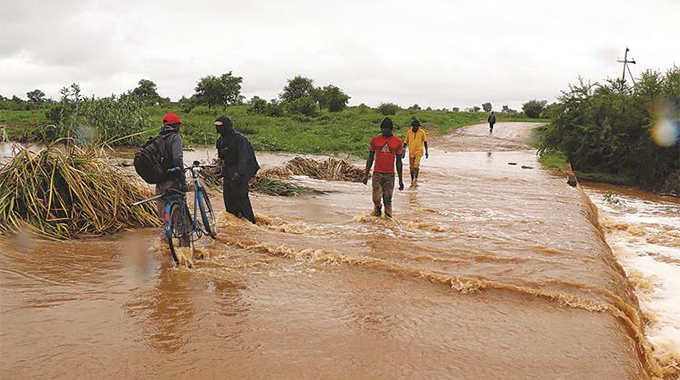Rains swell dam levels, farming activities improve

Elita Chikwati
Agriculture Reporter
Water levels are rising in dams as the rains keep falling, with a two percent rise in the first week of December, with more than half of all crops now planted.
The bulk of crops that have already germinated are in good condition although hailstorms have hit some tobacco fields.
The Meteorological Services Department said more rains are expected countrywide over the next few days.
Agritex acting chief director Mr Stancilae Tapererwa yesterday said all provinces countrywide had received significant rains during the last 20 days of November, marking the beginning of the season.
“Planting is in progress in all provinces and the bulk of the crops are in good condition. Tobacco is also doing well expect for some areas that were affected by hailstorms,” he said.
Zimbabwe National Farmers Union president Mr Edward Dune said half of the crops have so far been planted. Farmers continue to plant since the rains were delayed in some areas.
“Livestock is in good condition and pastures have improved. The only challenge is the increase of tick infestation. We are grateful to Government for introducing the tick grease programme, which will help us during this period,” he said.
Mr Dune said some dip tanks had been washed away by heavy rains.
Farmers had raised concern over the Pfumvudza contract forms they got from Government, but said there was need for awareness so that they fully understand the reason for getting such forms. The forms are designed to ensure farmers use their inputs for the designed purpose and sell part of their crop to GMB.
The Zimbabwe National Water Authority (Zinwa) says the average levels of dams has improved since November 30.
Zinwa corporate communications and marketing director Mrs Marjorie Munyonga said by Sunday, the national dam level average stood at 36,5 percent marking a 2,12 percent improvement since November 30.
“Major gains were recorded in Gwayi Catchment whose dam level average rose by 6,8 percent to 37,3 percent in the past week. Manyame Catchment’s dam level average is 55,8 percent, Mazowe Catchment 40,7 percent, Mzingwane Catchment 32,5 percent, Runde Catchment 32,1 percent, Sanyati Catchment 27 percent and Save Catchment 37,4 percent.
“Dams that recorded major improvements in the past week include Ngwenya Dam which gained 18,7 percent and is already spilling, Pollards Dam which is now full, Tshangwa Dam which is now 79,5 percent full after rising by 21,7 percent and Lower Mgusa which is now also full after gaining 34,7 percent,” she said.
Upper Mgusa also rose significantly to 77 percent after rising 16,1 percent. Tugwi-Mukosi Dam, the country’s largest inland water body gained 2,6 percent and is now 33,1 percent full.
Mrs Munyonga said while water levels in the dams have started improving, the rains were yet to make a noticeable impact on most of the major dams and water users are urged to continue using the available water sparingly and efficiently.







Comments